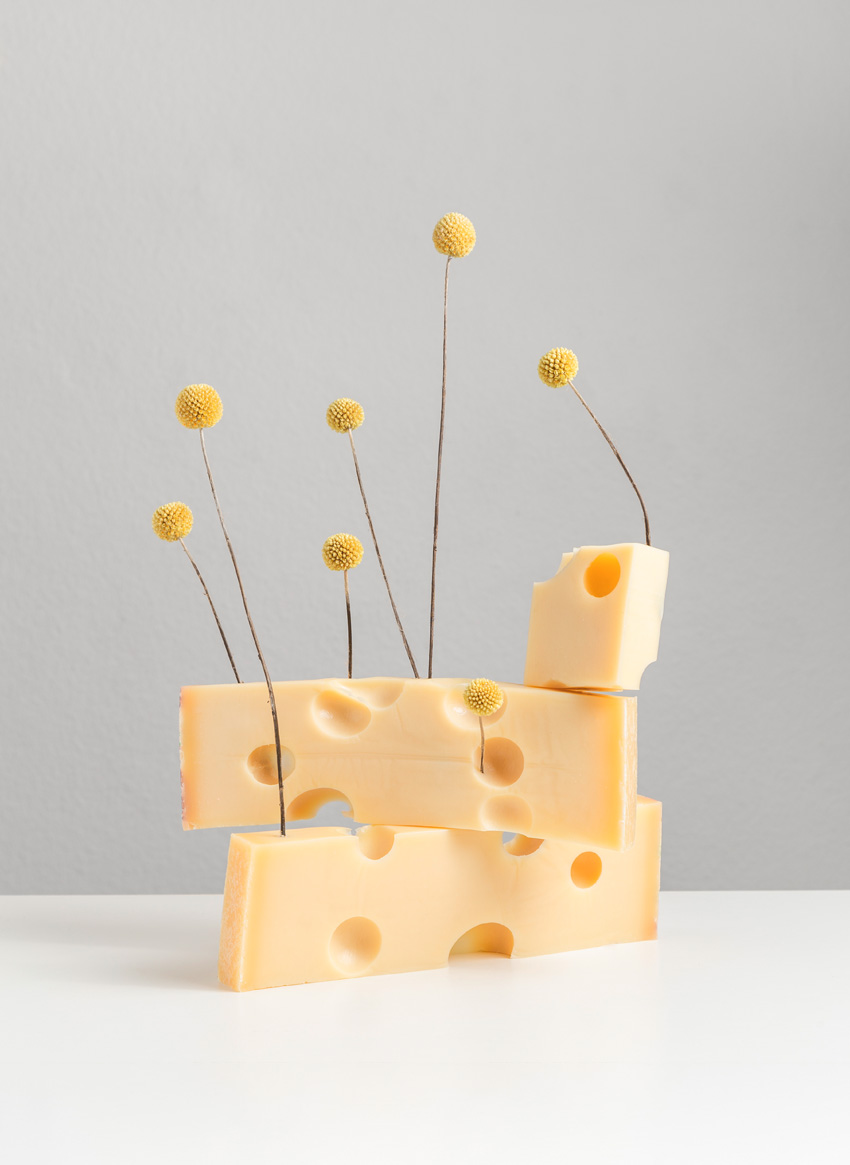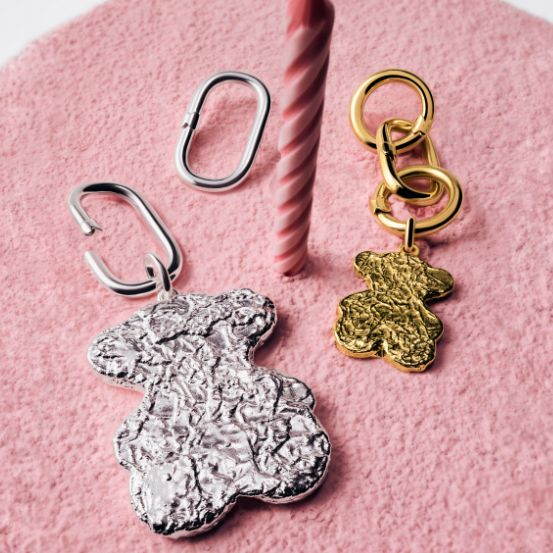The Blossom Issue
The use of flowers in cooking or decorating dishes is far from consensual. Like any trend, for that matter. Is it a way for chefs to embellish their creations? Or does it have some nutritional value?
Don't like it? Put it on the side of the plate. Just like they do with the rinds and "fat" in Feijoada à Transmontana. But, I assure you, these are essential for that taste that will make you order a Feijoada à Transmontana, instead of opting for the further exaggeration (and offense to the people of Trás-os-Montes) of an Alheira with Fries and Egg on Horseback or the Posta Mirandesa, which were also available on the menu, but... A feijoada is a feijoada, right? Wrong, so many people will say, especially the more "carnivorous" ones and those who have embarked on the paleo diet, which allows them to munch on the "Posta Mirandesa", a good protein, accompanied only by a "salad" (woe betide the diminutives) because they don't know that, in Trás-os-Montes, alheira is accompanied by sautéed greens, not only because the bitterness "disgusts" but also because it compensates for eating so much fat in one go. Kale or turnip greens? Whatever. Because both are flowers, sir, flowers in the lap of our Holy Queen of Gastronomy, from the farmer and from the best that our land has to offer (I hope you understood the pun with Queen St. Elizabeth and King Dinis' nickname, otherwise, having explained it to you now, you'll miss the joke). The greens are, in principle, the end. In the case of cabbage, a lovely vegetable that grows in height because we "prune" it by taking a leaf from here and another from there (I'm talking about the ones our mothers and grandmothers have in the backyard, not the ones you find in supermarkets, which never grow above our knees, poor things), its flowering means that the abundance is over and the caterpillar and the sad white butterfly are coming. The option is to remove the flower (the sprout) and sauté it, make a smash with potatoes (and lots of garlic), rice to accompany the everlasting fried fish, or because less is more is the sacred rule of Portuguese eating, boil them to accompany a nice, fat slice of yellow cod, crowning everything with a drizzle of olive oil, the gold of today. When you do this, and because sustainability is just a modern term for what the farmer has always done, you should leave one or two flowers on the cabbage stalk which, in a few months, and if the birds don't arrive first, will result in a pod with dozens of small black seeds which, falling to the ground, will perpetuate the cycle. In the case of coriander, I well remember my mother's despair when, after a heat wave or direct sunlight, they would "grill." Because it meant a huge "no more sweet" in the açordas and migas and arrozes and almost everything else that is made in Alentejo cuisine. What's important is that after these "caloramas", comes the abundance of tomatoes, which, being a fruit, were also once a flower, and by tradition, rarely go with coriander, more calling for oregano.
Anyone who isn't from the Algarve only goes there for one reason. Yes, that reason. It's just that our vacation destination pulses with life. And far away from the beaches there are incredible landscapes and, most importantly, a culture that has remained almost intact. To get to know it, you have to leave Vila Real de Santo António at the end of winter and take the EM512 (45 minutes for 27km) into the mountains, with many curves and incredible views, unimaginable there, at least for most of us. The route sets the tone. In February, the almond blossom puts this region on par with Japan, which receives thousands of tourists to see the cherry trees in bloom. Once we arrived in Alta Mora, a village with just 20 inhabitants, we realized the fascination... Thousands of people wander through the streets that have remained the same for centuries and enter the houses that have been restored and maintained for this event. There's the old tavern that still holds the ledger of spins and ounces of tobacco, the donkey corral, the community oven where we can bake the bread we kneaded next door, the traditional smokehouse where we hang the sausages we can also learn to make, the house where the looms are still working, the house where we can still learn to make sausages the house where the looms are still working, workshops in basketry, rope making and, of course, lots of music, snack stalls, and local producers with their medronho, wines, sausages, bread, honey, all the knowledge and flavors that we thought were lost, at hand, an authenticity that calls foreigners to stay high in the middle of the low season, and which perhaps few Portuguese know exists: the Algarve Almond Blossom Festival. Yes, a flower that will bear fruit, but which for the time being only paints an incredible landscape, serving as an excuse for a visit of incredible flavors, including a 42-meter almond tart by the hand of chef Francisco Siopa, the pastry chef at the Penha Longa Resort. Here, everything is a kitchen because of a flower. And the flower because of the kitchen? First of all, it goes to show that the use of flowers in dishes is not just a matter of fashion dictating presentation. Flowering is one of the stages of a particular group of plants. And sometimes the animals that eat these plants prefer them before they become fruit. Man is no exception. Let's talk about the children's nightmare and the ode to diet: broccoli. Or a bunch of them. It depends on your perspective. Some people call a broccoli sauce a broccoli stalk. And vice versa. All those independent points are flowers. Yes, broccoli (Brassica oleracea - Italica group) is an edible flower. More precisely, it is a set of edible inflorescences, because it is harvested (and preferably eaten) before the flowers have fully opened, when the shoots are still compact and not fully ripe. When this ripeness (and flowering) occurs, the broccoli turns from green to yellow and it is at this point that, following all the teachings of a consumerist society where waste is the law, we throw it away. This brings us to the other "cousins" of the same species which, by now, you may have guessed... Yes, cauliflower (Brassica oleracia - Botrytis group) and the commonly adored (ironic, because the correct term is "traumatic") Brussels sprouts (Brassica oleracia - Gemmifera group). All cabbages (all Brassica oleracia), from cabbage to red cabbage, from Savoy cabbage to Galician cabbage, resemble flowers. That doesn't mean they're beautiful enough to make a bridal bouquet, but they do look similar. The case of cabbages is paradoxical because, like sardines and cod, it's something we hate when we're little but, as we grow up and we acquire certain wisdom that frees us from prejudices (yes, in food we have preconceptions, especially when they don't please the eye, which is natural in a child but bad for an adult: "Oh how horrible I don't eat eels because they look like snakes"), we love them. Let's face it, nowadays our palate tells us that cabbage is the best part of a Portuguese stew, with the sole exception of farinheira. But is it pleasing to the eye? No. Is it "photographable"? Hardly. That's what flowers are for. And let's ask ourselves: "Flowers on a stew platter"?
Potatoes. It's still good in the oven, fried too. But boiled? There's nothing more sad, boring, devoid of any interest than a baked potato. Even the best photographer in the world can't make it look appealing. Unless he uses a drizzle of olive oil and the pink or orange hues of a flower to contrast with the deathly pallor. Our perception changes completely. What was pitiful immediately takes on a warmer, more pleasant air. There is no doubt that this phenomenon has to do with the times we are living in. The dishes we eat in restaurants are no longer divided into those that are good and those that are just awful. There are only those that look good on your Instagram and those that don't even merit taking your phone out of your pocket, unless it's to reply to that really important message, and there are even restaurants where the chef tells the kitchen which dishes are the least photographed, i.e. those whose appearance needs to be changed. None of our followers on social media will taste what we're tasting. But they will envy the appearance. The first time I came across flowers decorating a dish was long before social media, at a dinner at Vila Joya, that oasis in the Algarve which, under the baton of Dieter Koschina, has held two Michelin Stars since 1999. As if everything there made sense without the need for an explanation, at the seventh course of a menu of more than a dozen, before the cigars and Armagnac on the terrace, a palate cleanser appeared with a lime foam as its base. I had to photograph it. And without a little violet, it would look like what we call spit or drool. This is the wisdom that attends René Redzepi's dishes at the Noma restaurant in Copenhagen, recognized as one of the best in the world. The flowers are there, as well as local, seasonal, and, above all, unusual ingredients. The also starred Dominique Crenn, chef of the restaurant Atelier Crenn in San Francisco (as well as Bar Crenn and Petit Crenn, also in the same Californian city), is the owner of a highly inventive but also poetic cuisine. Flowers decorate the dishes but also integrate them. Joan Roca, one of the brothers of the legendary El Celler de Can Roca in Girona, is a technician. Flowers are there as part of the impressive aesthetic of his dishes, which are always an experience for many more senses than just the palate. Michel Bras has a naturalistic approach to cooking, where local and seasonal ingredients, including flowers, celebrate the terroir of the French region of Aubrac, where his restaurant Le Suquet has become one of the best in the world. But long before this trend, which perhaps isn't because it's been going on for too long, flowers were always part of the traditional recipe, i.e. the one from which the great chefs always draw to create their creations, together with their technical knowledge. Nasturtium (Tropaeolum majus) and its spicy flavor, Violet (Viola odorata), known as the "winter flower", rich in vitamins A and C, Calendula (Calendula officinalis), a daisy used for centuries as a medicinal plant and textile dye, Borago (Borago officinalis), a blue flower with a highly refreshing flavor, and even various species of roses, with a delicate floral flavor, are transversal to many gastronomies far from each other. In Japan, Safflower Tempura (Carthamus tinctorius) is a centuries-old classic with an unusual, slightly bitter taste. Next door, in neighboring Spain, Ensalada de Flores is becoming more and more popular. It includes a variety of edible flowers that are usually mixed with fresh vegetables and herbs and its aroma is incredible. Agua de Jamaica is, after all, a traditional Mexican drink, made from dehydrated hibiscus flowers, boiled in water with sugar and spices, resulting in a refreshing and slightly acidic drink, always served with lots of ice. In India, Sri Lanka, Nepal, Pakistan, and Bangladesh, one of the most typical sweets is Gulab Jamun, made using powdered milk boiled into small spheres which are then soaked in rose water. But crowning it all is the dish that should be a must in any Italian restaurant worthy of the name, traditionally from Lombardy, the Fiori di Zucca in Pastella. Before the pumpkin (zucca) or even the zucchini (zucchini), the flower is picked, stuffed with ricotta cheese and herbs, spread with a batter, and then fried. It can be served like this, as an appetizer or a meal, topping a risotto, or... in any way. It would be more assertive to say that the popularity of this dish is widespread throughout Italy, such is the profusion of this product on sale in markets. And we're talking about a country with strong regionalisms, where the Neapolitans call the northern Italians polentoni ("polenta eaters"). We have our own. Regionalisms, I mean. I'm still trying to figure out why coriander, which gives everything its flavor, isn't eaten in our north, out of mere pickiness, when my grandfather, from Alentejo in the first half of the 20th century, was so hungry that he even ate thistle soup.
Translated from the original in The Blossom Issue, from march 2024. Full credits and stories in the print issue.
Relacionados
.jpg)



.jpg)

.jpg)

